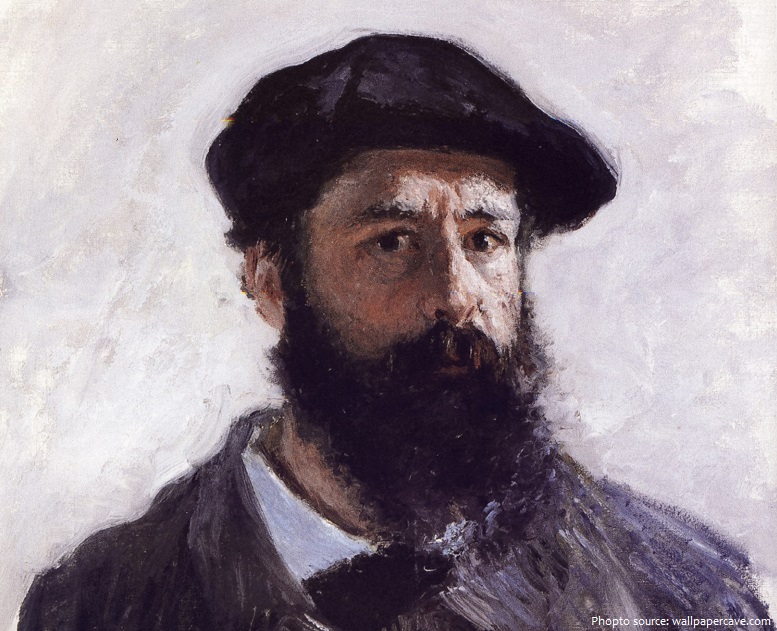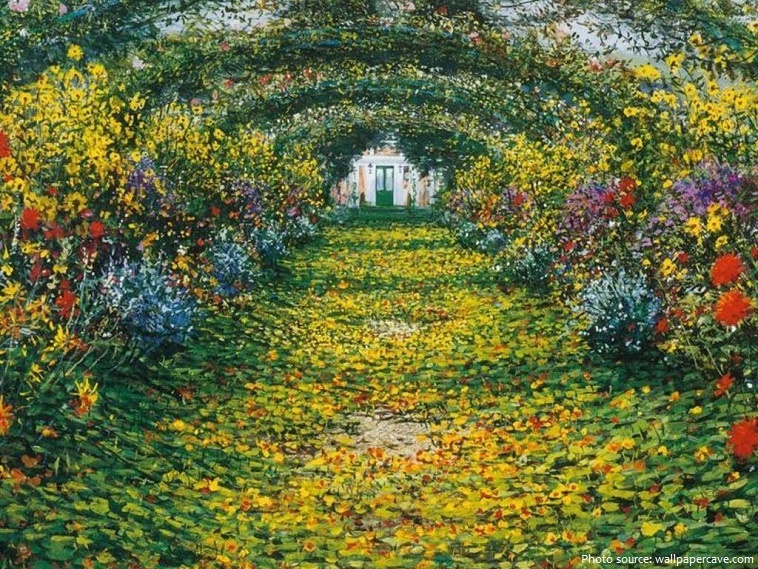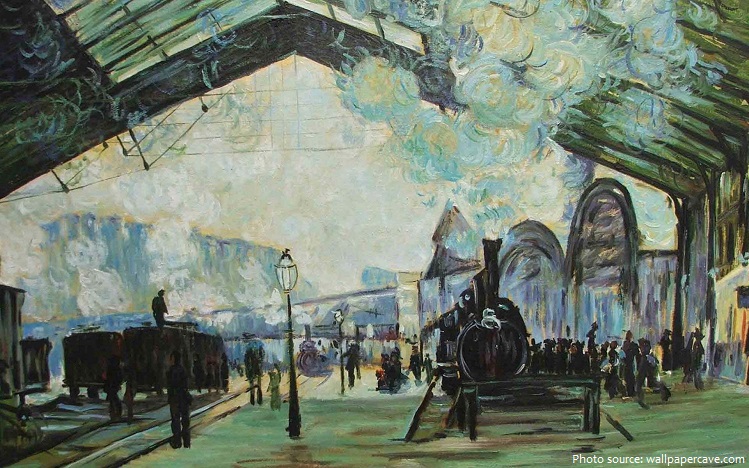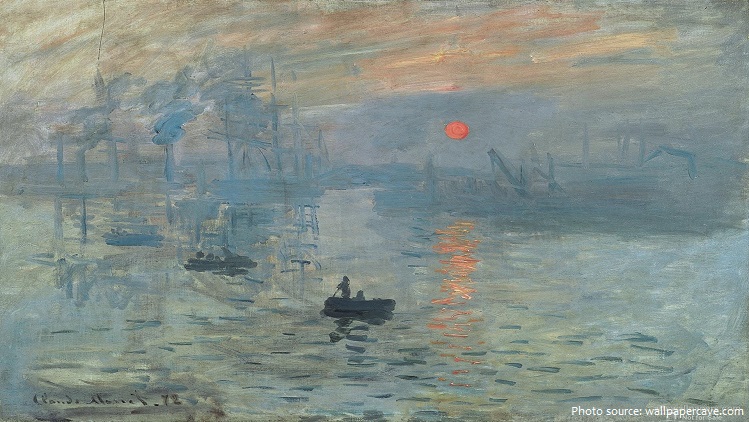
Claude Monet in full Oscar-Claude Monet was a french painter who was the initiator, leader, and unswerving advocate of the Impressionist style.
During his long career, he was the most consistent and prolific practitioner of impressionism’s philosophy of expressing one’s perceptions before nature, especially as applied to plein air (outdoor) landscape painting. The term “Impressionism” is derived from the title of his painting Impression, soleil levant, exhibited in the 1874 (“exhibition of rejects”) initiated by Monet and his associates as an alternative to the Salon.
He was born in Paris on 14 November 1840. The job of Monet’s father, Claude-Adolphe, is not known except that it was a humble one and that the family often struggled financially.

In 1845, the Monets moved to Le Havre on the northern coast of France where Claude-Adolphe worked in his brother-in-law’s thriving wholesale grocery business. Claude’s favourite subject at school was art, and, fascinated by the boats in the busy harbour, he often sketched them. From 15, he made money by selling caricatures, some of which were displayed in a local shop window each Sunday, which became a minor local attraction. Monet’s aunt, Marie-Jeanne Lecadre, was an amateur painter and she encouraged Oscar-Claude, introducing him to the artist Amand Gautier.
In 1859, Monet went to Paris to study at the Académie Suisse, where he became close friends with a fellow student, Camille Pissarro. Between 1860 and 1862 Monet served in Algeria as a conscript. He returned to Paris where he met most of the major artists of the era including Renoir, Cézanne, Whistler and Manet.

Monet liked to work outdoors and was sometimes accompanied by Renoir, Sisley and Bazille on these painting sojourns. Monet won acceptance to the Salon of 1865, an annual juried art show in Paris – the show chose two of his paintings, which were marine landscapes. Though Monet’s works received some critical praise, he still struggled financially.
Monet’s Camille or The Woman in the Green Dress (La Femme à la Robe Verte), painted in 1866, brought him recognition, and was one of many works featuring his future wife, Camille Doncieux – she was the model for the figures in The Woman in the Garden of the following year, as well as for On the Bank of the Seine, Bennecourt, 1868, pictured here. Shortly thereafter Doncieux became pregnant and gave birth to their first child, Jean. In 1868, due to financial reasons, Monet attempted suicide by
throwing himself into the Seine.
A small part of the future impressionist group – Monet, Manet and Renoir – met up in 1872 in Argenteuil where the movement’s very first work, Impression, Rising Sun (Impression, soleil levant), was produced and which later gave its name to the movement. This painting was exhibited to the public during the first impressionist exhibition in 1874. This year would indeed mark the height of the impressionist movement and would define Monet as one of its creators. Despite criticism, the impressionists
would produce six exhibitions until 1882. And Durant-Ruel’s continual purchases would allow Monet to live a decent life without having to participate in official art fairs.

Monet gained financial and critical success during the late 1880s and 1890s, and started the serial paintings for which he would become well-known. In Giverny, he loved to paint outdoors in the gardens that he helped create there. The water lilies found in the pond had a particular appeal for him, and he painted several series of them throughout the rest of his life – the Japanese-style bridge over the pond became the subject of several works, as well. (In 1918, Monet would donate 12 of his waterlily paintings to the nation of France to celebrate the Armistice.)
During World War I, in which his younger son Michel served and his friend and admirer Clemenceau led the French nation, Monet painted a series of Weeping Willow trees as homage to the French fallen soldiers. Cataracts formed on Monet’s eyes, for which he underwent two operations in 1923. The paintings done while the cataracts affected his vision have a general reddish tone, which is characteristic of the vision of cataract victims. It may also be that after surgery he was able to see certain ultraviolet wavelengths of light that are normally excluded by the lens of the eye, this may have had an effect on the colors he perceived. After his operations he even repainted some of these paintings, with bluer water lilies than before the operation.

Monet died of lung cancer on December 5, 1926 at the age of 86 and is buried in the Giverny church cemetery. Monet had insisted that the occasion be simple – thus about fifty people attended the ceremony.
Monet sometimes got frustrated with his work. According to some reports, he destroyed a number of paintings—estimates range as high as 500 works. Monet would simply burn, cut or kick the offending piece. In addition to these outbursts, he was known to suffer from bouts of depression and self-doubt.